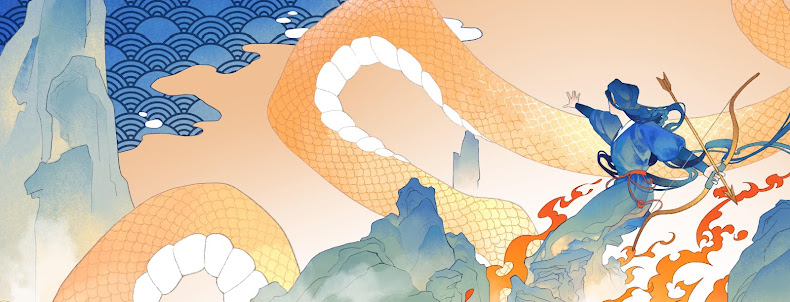One of the hallmarks of the genre is the blending of historical events with tales of chivalrous adventures of righteous martial artists with superhuman skills, embedding themes of brotherhood loyalty and gallant altruism.
As one of Jin Yong’s more well-known wuxia series—the Condor Heroes trilogy—goes through the process of being translated into English and published, his novels have at last begun to gain wider recognition in the English language book world.
My own writing career began with historical Chinese fiction as I have always been a devoted dabbler in Chinese History. As Jin Yong’s’ readers would know, all his wuxia novels have the marks of well-researched historical settings and casts that include historical characters. The enduring popularity of his novels as well as wuxia C-dramas seems to speak to the proven viability of mixing history with wuxia fantasy.
One day I went down memory lane to revisit my childhood days when my cousins and I, goaded by Jin Yong’s novels, used to amuse ourselves by playacting martial arts heroes and heroines. We would spar with wooden ruler swords, don capes of torn towels and hop from chair to chair in imitation of qinggong stunts. Beset with nostalgia, I started toying with the idea of writing wuxia fantasy novels.
That
was how the notion of writing the Sword
Maiden from the Moon duology was first spawned. Later, as more creative
ideas developed, the realist in me pleaded for the story to be grounded in a
civil war and rebellion that happened in the early Ming Dynasty, while the
dreamer in me nudged me to create a female knight-errant as the lead and a
magical world where mortals, immortals and demons are staged, with retelling of popular Chinese myths.
As
much as the heroine of my story is imaginary, she is nonetheless inspired by a
real but little known woman rebel leader who escaped capture under the Yongle
Emperor’s reign. I have retained her real name “Tang Sai’er” (唐賽兒) in the novel and
she was also truly a leader of the White Lotus Sect (白蓮教). I thought her story of chutzpah was worth telling. But information about her life
is so lacking though that it afforded me much creative liberty to paint her
character. Her “Chang’e” (嫦娥) side was prompted by a Chinese novel titled The Unofficial History of the Female
Immortal (女仙外史) written by a Qing novelist named Lu Xiong 呂熊 (1642-1723).


No comments:
Post a Comment